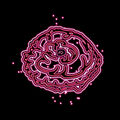Template:Selected anniversaries/February 23: Difference between revisions
No edit summary |
No edit summary |
||
| Line 28: | Line 28: | ||
||1914: Robert Joseph Huebner born ... virologist whose theory that certain genes, which he called oncogenes, are involved in cancer focused researchers' attention on finding them. His investigations paved the way for the discovery of viral causes of cancers and several other serious diseases and for the development of a number of vaccines and treatments. Pic: http://www.edubilla.com/award/national-medal-of-science/robert-huebner/ | ||1914: Robert Joseph Huebner born ... virologist whose theory that certain genes, which he called oncogenes, are involved in cancer focused researchers' attention on finding them. His investigations paved the way for the discovery of viral causes of cancers and several other serious diseases and for the development of a number of vaccines and treatments. Pic: http://www.edubilla.com/award/national-medal-of-science/robert-huebner/ | ||
||Jean-Gaston Darboux | ||1917: Jean Gaston (Jean-Gaston) Darboux dies ... mathematician. Pic. | ||
||1924 – Allan McLeod Cormack, South-African-American physicist and academic, Nobel Prize laureate | ||1924 – Allan McLeod Cormack, South-African-American physicist and academic, Nobel Prize laureate. | ||
||1927 | ||1927: U.S. President Calvin Coolidge signs a bill by Congress establishing the Federal Radio Commission (later replaced by the Federal Communications Commission) which was to regulate the use of radio frequencies in the United States. | ||
File:Werner Heisenberg.jpg|link=Werner Heisenberg (nonfiction)|1927: German theoretical physicist [[Werner Heisenberg (nonfiction)|Werner Heisenberg]] writes a letter to fellow physicist Wolfgang Pauli, in which he describes his uncertainty principle for the first time. | File:Werner Heisenberg.jpg|link=Werner Heisenberg (nonfiction)|1927: German theoretical physicist [[Werner Heisenberg (nonfiction)|Werner Heisenberg]] writes a letter to fellow physicist Wolfgang Pauli, in which he describes his uncertainty principle for the first time. | ||
| Line 40: | Line 40: | ||
File:Plutonium pellet.jpg|link=Plutonium (nonfiction)|1941: [[Plutonium (nonfiction)|Plutonium]] is first produced and isolated by [[Glenn T. Seaborg (nonfiction)|Dr. Glenn T. Seaborg]]. | File:Plutonium pellet.jpg|link=Plutonium (nonfiction)|1941: [[Plutonium (nonfiction)|Plutonium]] is first produced and isolated by [[Glenn T. Seaborg (nonfiction)|Dr. Glenn T. Seaborg]]. | ||
||1942 | ||1942: World War II: Japanese submarines fire artillery shells at the coastline near Santa Barbara, California. | ||
||1944 | ||1944: Leo Baekeland dies ... chemist and engineer. | ||
||Robert Edward "Rufus" Bowen | ||1947: Robert Edward "Rufus" Bowen born. He will specialize in dynamical systems theory. Bowen's work dealt primarily with axiom A systems, but the methods he used while exploring topological entropy, symbolic dynamics, ergodic theory, Markov partitions, and invariant measures "have application far beyond the axiom A systems for which they were invented." Pic. | ||
||Antonio Signorini | ||1963: Antonio Signorini dies ... mathematical physicist and civil engineer of the 20th century. He is known for his work in finite elasticity, thermoelasticity and for formulating the Signorini problem. Pic. | ||
File:Claude Shannon.jpg|link=Claude Shannon (nonfiction)|1963: Mathematician, information engineer, and crime-fighter [[Claude Shannon (nonfiction)|Claude Shannon]] publishes new theory of entropy which reveals new approaches to the detection and prevent of [[crimes against mathematical constants]]. | File:Claude Shannon.jpg|link=Claude Shannon (nonfiction)|1963: Mathematician, information engineer, and crime-fighter [[Claude Shannon (nonfiction)|Claude Shannon]] publishes new theory of entropy which reveals new approaches to the detection and prevent of [[crimes against mathematical constants]]. | ||
| Line 52: | Line 52: | ||
|File:Vandal Savage Field Report Small Boy.jpg|link=Vandal Savage (nonfiction)|1964: ''Field Report Number One'' by [[Vandal Savage (nonfiction)|Vandal Savage Press]] republished using latest [[high-energy literature]] techniques. | |File:Vandal Savage Field Report Small Boy.jpg|link=Vandal Savage (nonfiction)|1964: ''Field Report Number One'' by [[Vandal Savage (nonfiction)|Vandal Savage Press]] republished using latest [[high-energy literature]] techniques. | ||
||Hans Bernd Gisevius | ||1974: Hans Bernd Gisevius dies ... German diplomat and intelligence officer during the Second World War. A covert opponent of the Nazi regime and radical communist, he served as a liaison in Zürich between Allen Dulles, station chief for the American OSS and the German Resistance forces in Germany. Pic. | ||
||1987 | ||1987: Supernova 1987a is seen in the Large Magellanic Cloud. | ||
||2012 | ||2012: David Sayre dies ... physicist and mathematician ... No pic. | ||
File:Crimson Blossom 2.jpg|link=Crimson Blossom 2 (nonfiction)|2017: Chromatographic analysis of ''[[Crimson Blossom 2 (nonfiction)|Crimson Blossom 2]]'' reveals previously unknown [[Color (nonfiction)|color]] which is "midway between [[Red (nonfiction)|red]] and [[Violet (nonfiction)|violet]]." | File:Crimson Blossom 2.jpg|link=Crimson Blossom 2 (nonfiction)|2017: Chromatographic analysis of ''[[Crimson Blossom 2 (nonfiction)|Crimson Blossom 2]]'' reveals previously unknown [[Color (nonfiction)|color]] which is "midway between [[Red (nonfiction)|red]] and [[Violet (nonfiction)|violet]]." | ||
</gallery> | </gallery> | ||
Revision as of 18:50, 29 December 2018
1580: Physician, occultist, and Gnomon algorithm theorist Johann Weyer publicly accuses the House of Malevecchio of secretly distributing clandestiphrine and other illegal drugs.
1583: Mathematician, astrologer, and astronomer Jean-Baptiste Morin born.
1742: Physicist and academic Laura Bassi uses Gnomon algorithm functions to translate Newton's ideas of physics and natural philosophy into Italian.
1855: Mathematician, astronomer, and physicist Carl Friedrich Gauss dies. He had an exceptional influence in many fields of mathematics and science and is ranked as one of history's most influential mathematicians.
1898: Émile Zola is imprisoned in France after writing "J'accuse", a letter accusing the French government of antisemitism and wrongfully imprisoning Captain Alfred Dreyfus.
1927: German theoretical physicist Werner Heisenberg writes a letter to fellow physicist Wolfgang Pauli, in which he describes his uncertainty principle for the first time.
1940: ENIAC program accidentally generates new class of crimes against mathematical constants.
1941: Plutonium is first produced and isolated by Dr. Glenn T. Seaborg.
1963: Mathematician, information engineer, and crime-fighter Claude Shannon publishes new theory of entropy which reveals new approaches to the detection and prevent of crimes against mathematical constants.
2017: Chromatographic analysis of Crimson Blossom 2 reveals previously unknown color which is "midway between red and violet."









